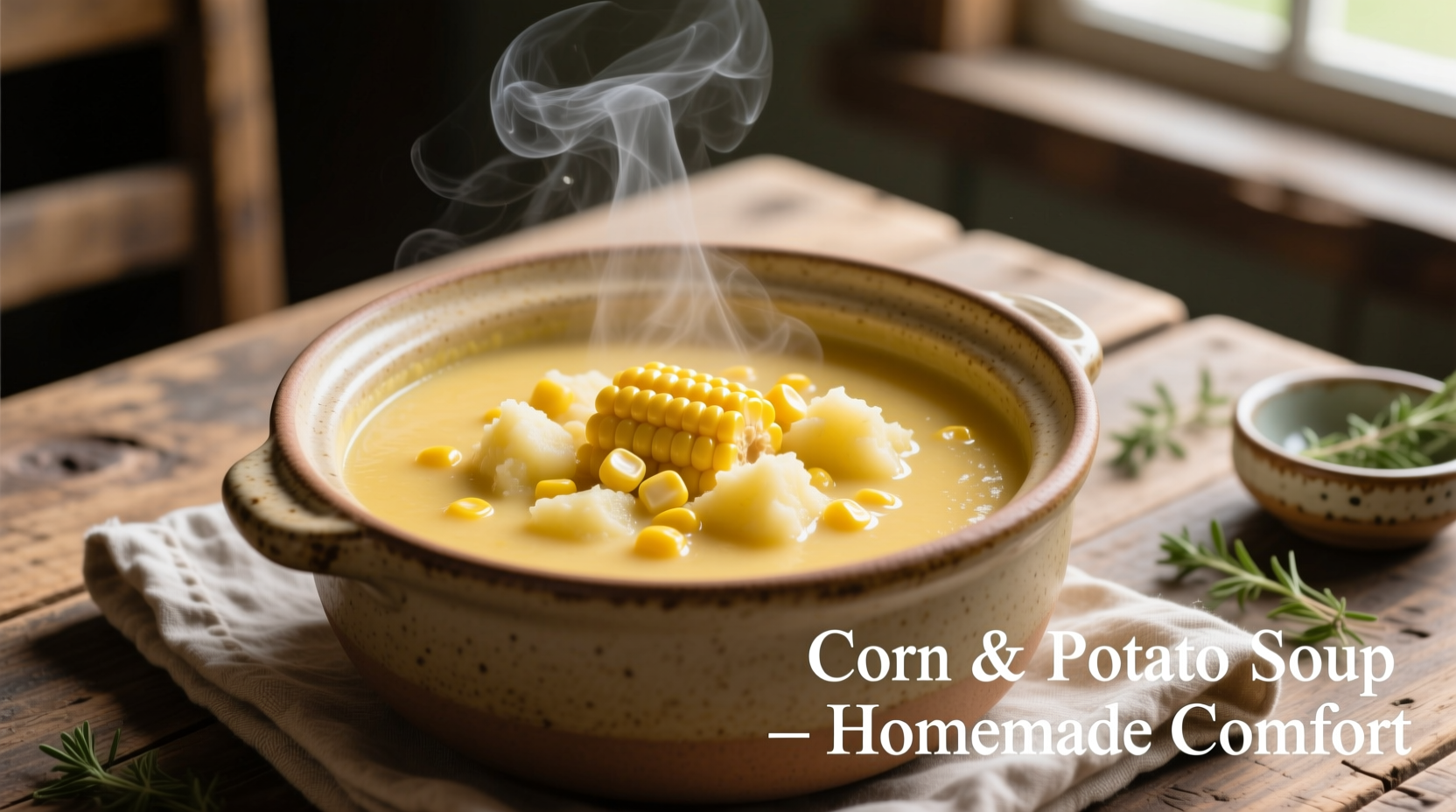Why Corn Belongs in Your Potato Soup (When Done Right)
Many home cooks debate whether corn has a place in potato soup, but culinary tradition shows this combination has delighted palates for generations. When incorporated properly, corn transforms a simple potato soup into a more complex, satisfying meal that bridges comfort food and seasonal freshness.
The Historical Journey of Corn in Potato Soup
Potato soup originated in European kitchens where corn wasn't available until after Columbus's voyages. The fusion began when settlers in North America discovered how indigenous corn varieties complemented European potato traditions. By the 19th century, coastal communities from New England to the Mid-Atlantic developed signature corn-potato combinations that remain popular today.
| Era | Regional Development | Key Influences |
|---|---|---|
| Pre-1492 | European potato soups without corn | Native European root vegetables only |
| 1500-1700 | Limited corn integration in colonial cooking | Indigenous American cooking techniques |
| 1700-1850 | Regional specialties emerge in coastal America | Fishing communities combining seafood with corn/potato |
| 1850-Present | Modern variations across North America | Canned corn making preparation more accessible |
Flavor Science: How Corn Transforms Potato Soup
Potatoes provide earthy starchiness while corn contributes natural sugars that balance the soup's richness. The contrasting textures create a more interesting eating experience—creamy potatoes against corn's slight crunch. Food scientists at Cornell University's Food Science Department note that corn's natural pectin helps stabilize emulsions in creamy potato soups, preventing separation.

When Corn Works Best in Potato Soup
Not all potato soups benefit from corn. Understanding these contextual boundaries prevents culinary missteps:
- Seasonal appropriateness: Summer and early fall when fresh corn is at peak sweetness
- Regional variations: Coastal recipes often pair corn with seafood additions
- Texture balance: Works best in chunky potato soups, not pureed varieties
- Flavor profile: Complements bacon or ham-based broths better than herb-focused versions
Perfect Corn Integration: A Step-by-Step Guide
Follow these professional techniques for optimal results:
- Select quality corn: Fresh ears (when in season) or high-quality frozen kernels
- Timing matters: Add during the last 5-7 minutes of cooking to preserve texture
- Quantity balance: ½ to 1 cup per quart of soup prevents overwhelming potato flavor
- Flavor enhancement: Sauté corn briefly with aromatics before adding liquid
- Seasoning adjustment: Reduce added sugar slightly to account for corn's natural sweetness
Three Distinct Corn-Potato Soup Variations
Classic New England Style
Combine diced potatoes, fresh corn, clam broth, and a touch of cream. The corn's sweetness balances the briny broth perfectly. Add corn during the final simmer after potatoes are tender.
Midwestern Harvest Soup
Features smoked paprika, corn, and Yukon Gold potatoes with a vegetable broth base. Roast some corn kernels before adding for deeper flavor complexity.
Coastal Chowder-Inspired
Add corn along with diced celery and bell peppers for authentic chowder texture. Finish with a splash of apple cider vinegar to brighten the corn's natural sweetness.
Avoid These Common Corn-Potato Mistakes
Even experienced cooks make these errors that compromise your soup:
- Overcooking corn: Boiling too long makes kernels mushy and loses sweetness
- Using canned corn without draining: Adds unnecessary starch that thickens soup unpredictably
- Adding corn too early: Causes flavor and texture degradation during prolonged cooking
- Imbalanced proportions: Too much corn overwhelms the potato foundation
When to Skip the Corn
Reserve corn for appropriate contexts. Traditional European potato soups, especially German or Irish varieties, typically don't include corn. Similarly, when making a refined potato bisque or when using delicate heirloom potato varieties, corn might disrupt the intended flavor profile.
Final Thoughts for Perfect Corn-Potato Harmony
The secret to successful corn integration lies in respecting both ingredients' qualities. When corn appears vibrant and fresh in your local market, consider adding it to your next potato soup preparation. The combination works particularly well when you're aiming for a lighter, seasonal soup that maintains comforting qualities while showcasing summer's bounty.











 浙公网安备
33010002000092号
浙公网安备
33010002000092号 浙B2-20120091-4
浙B2-20120091-4